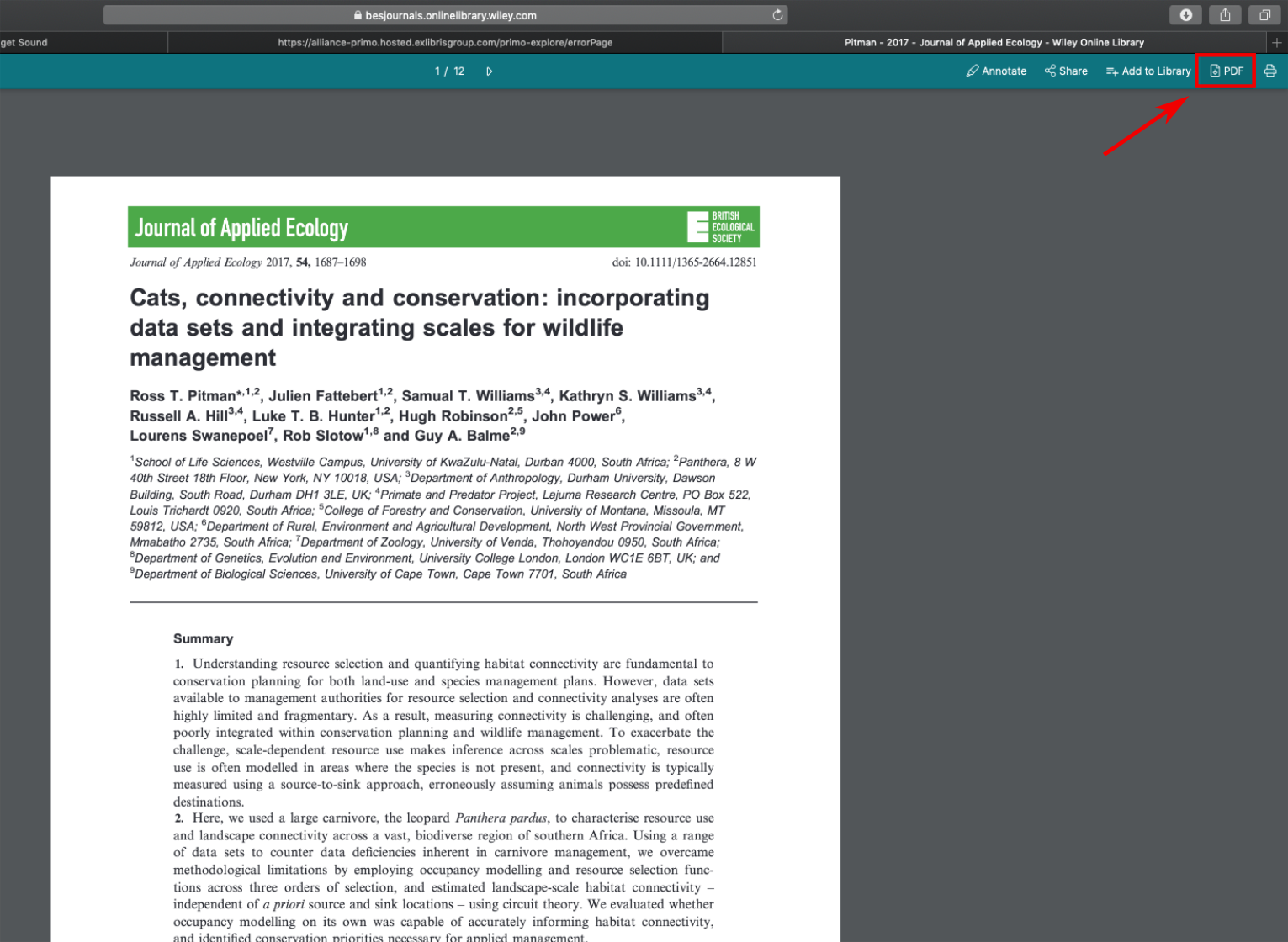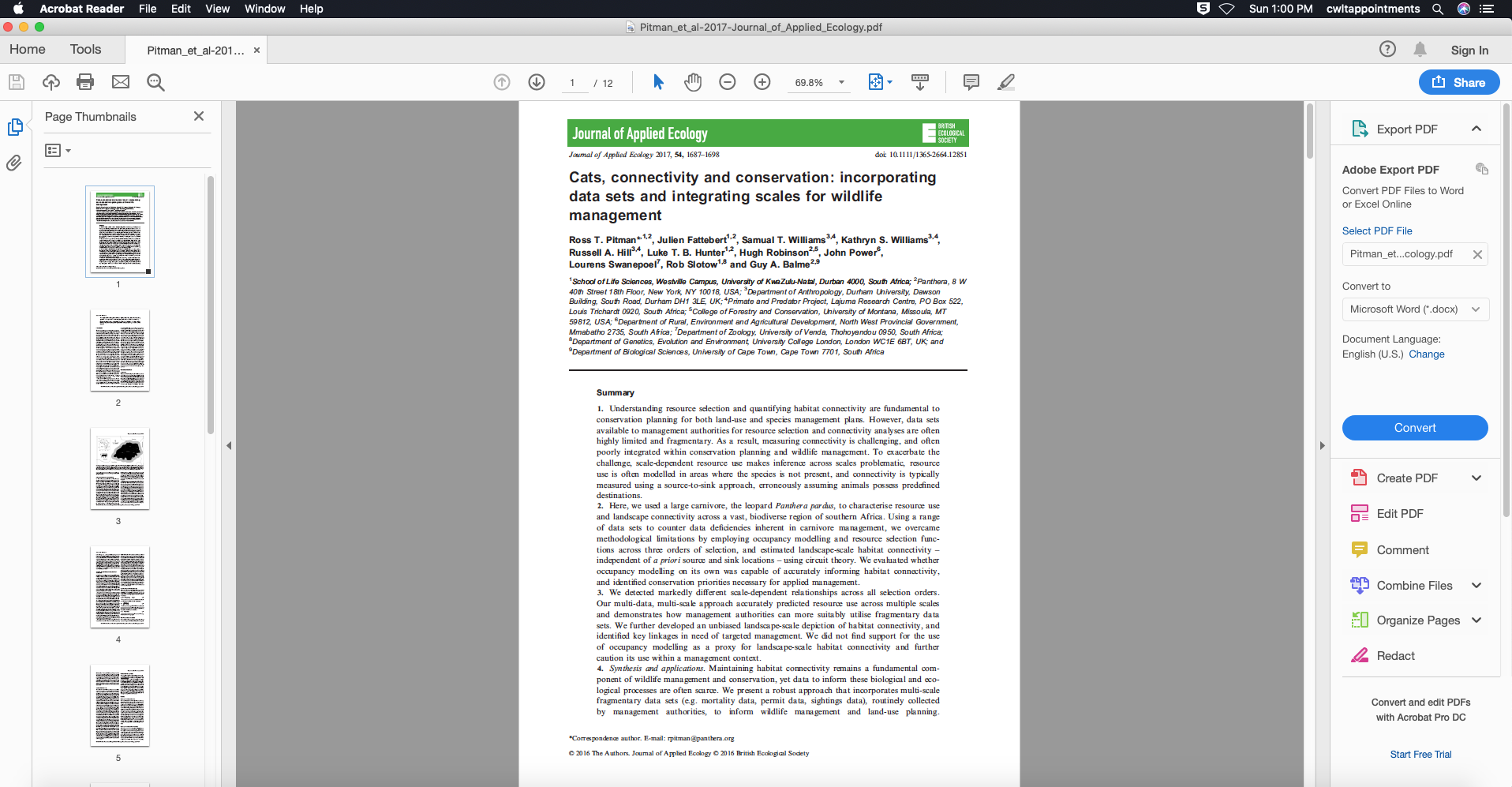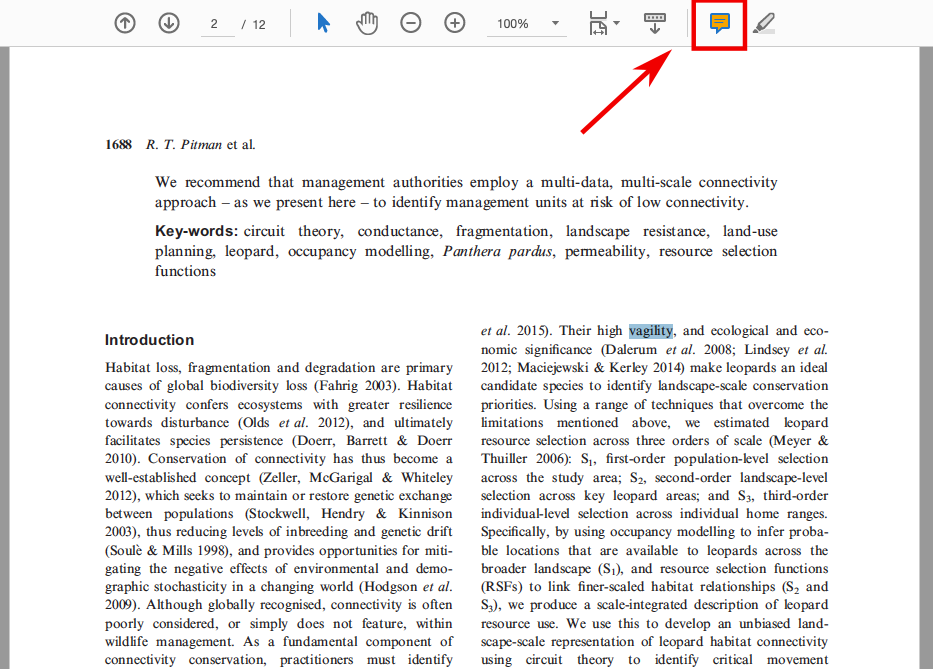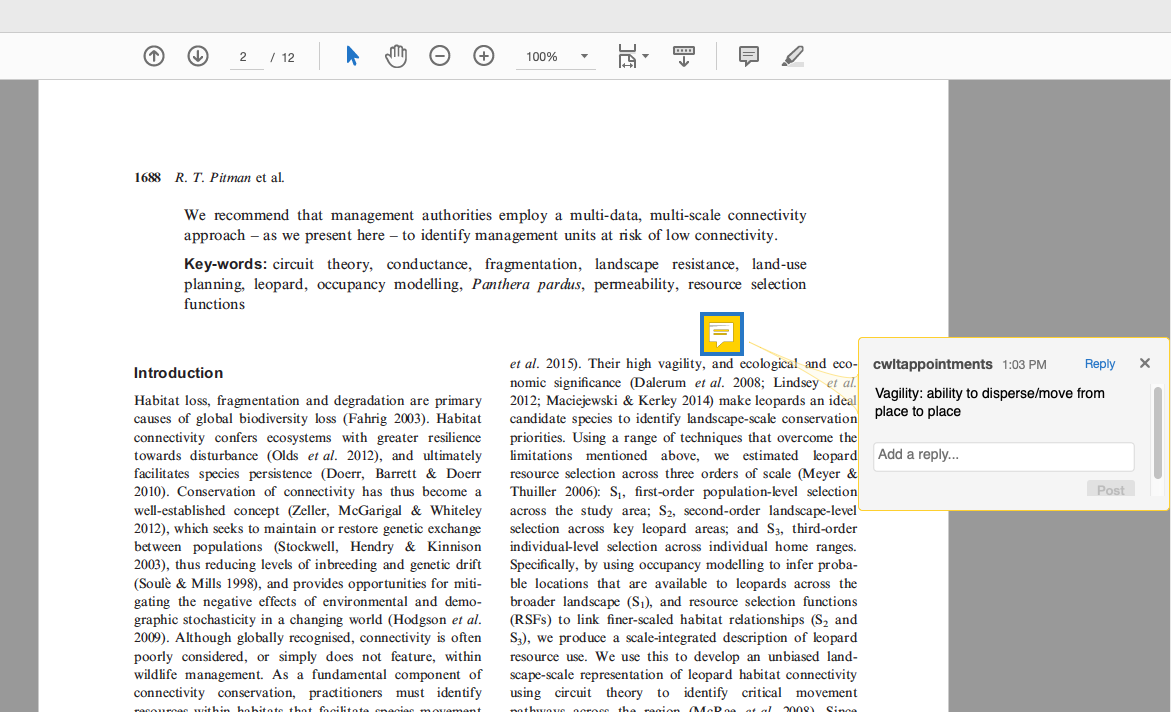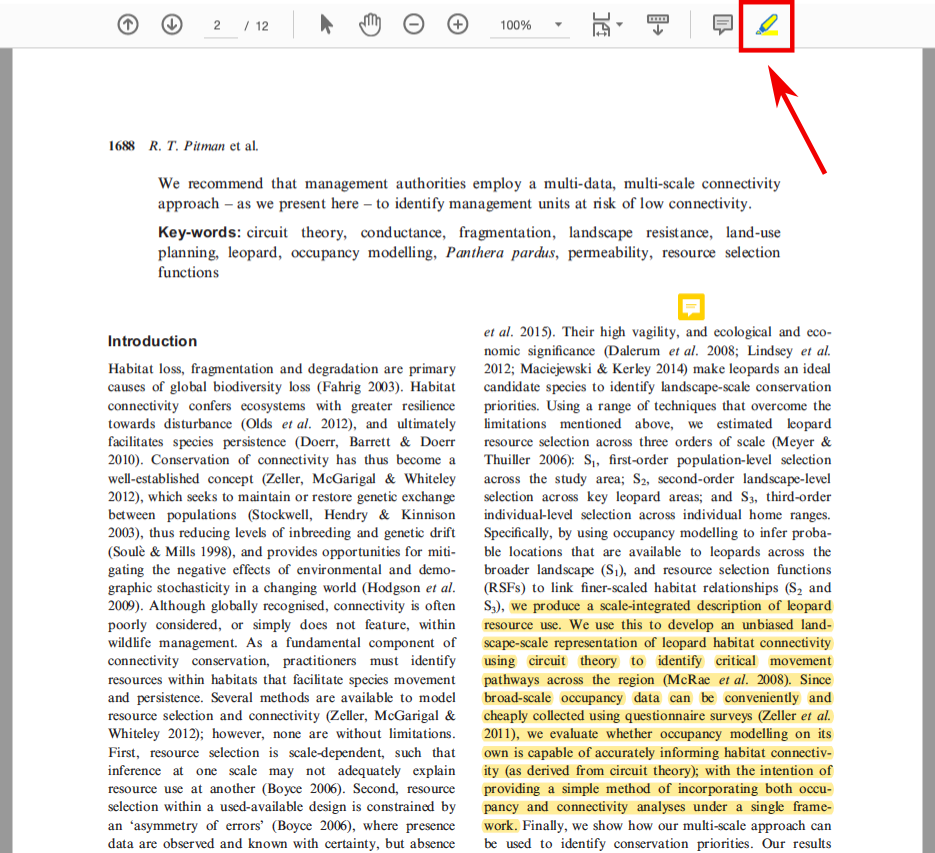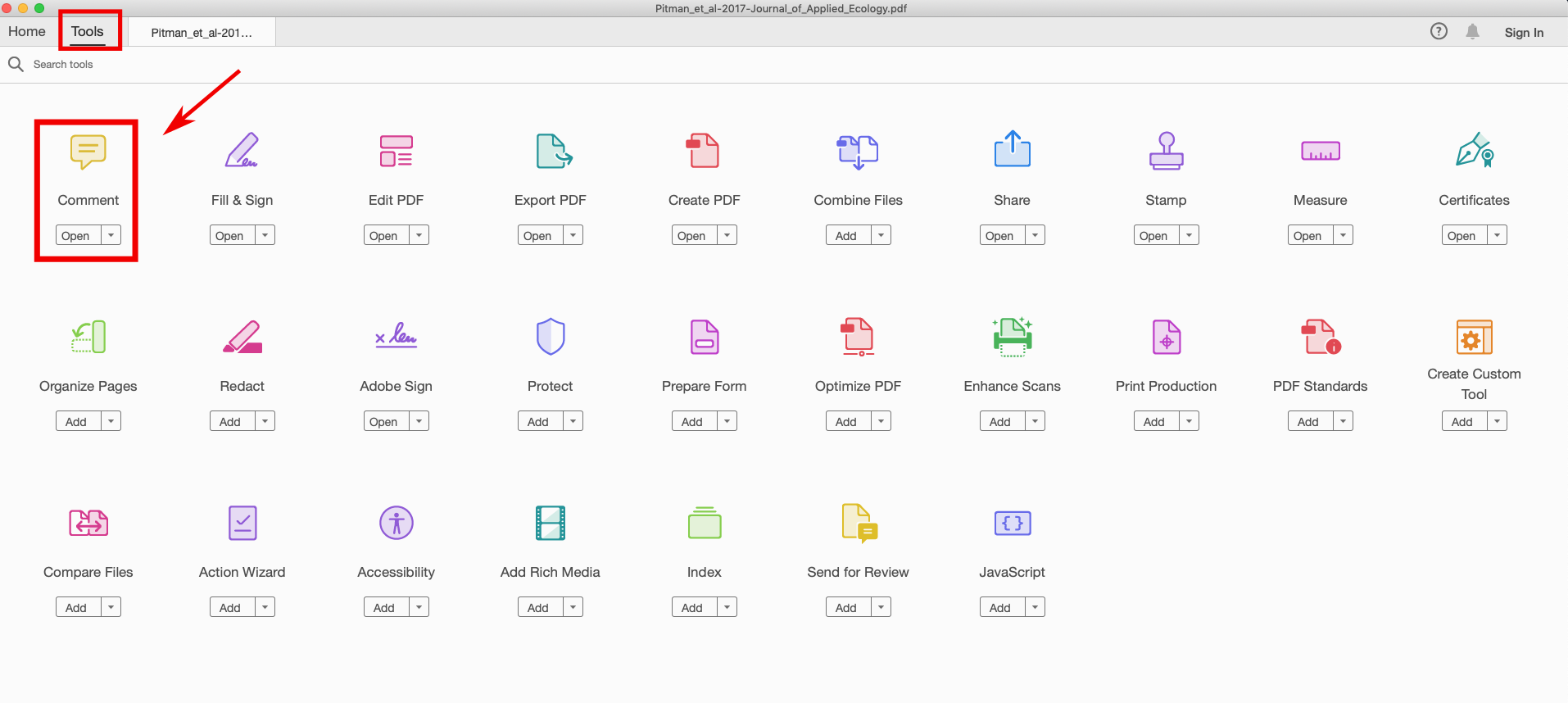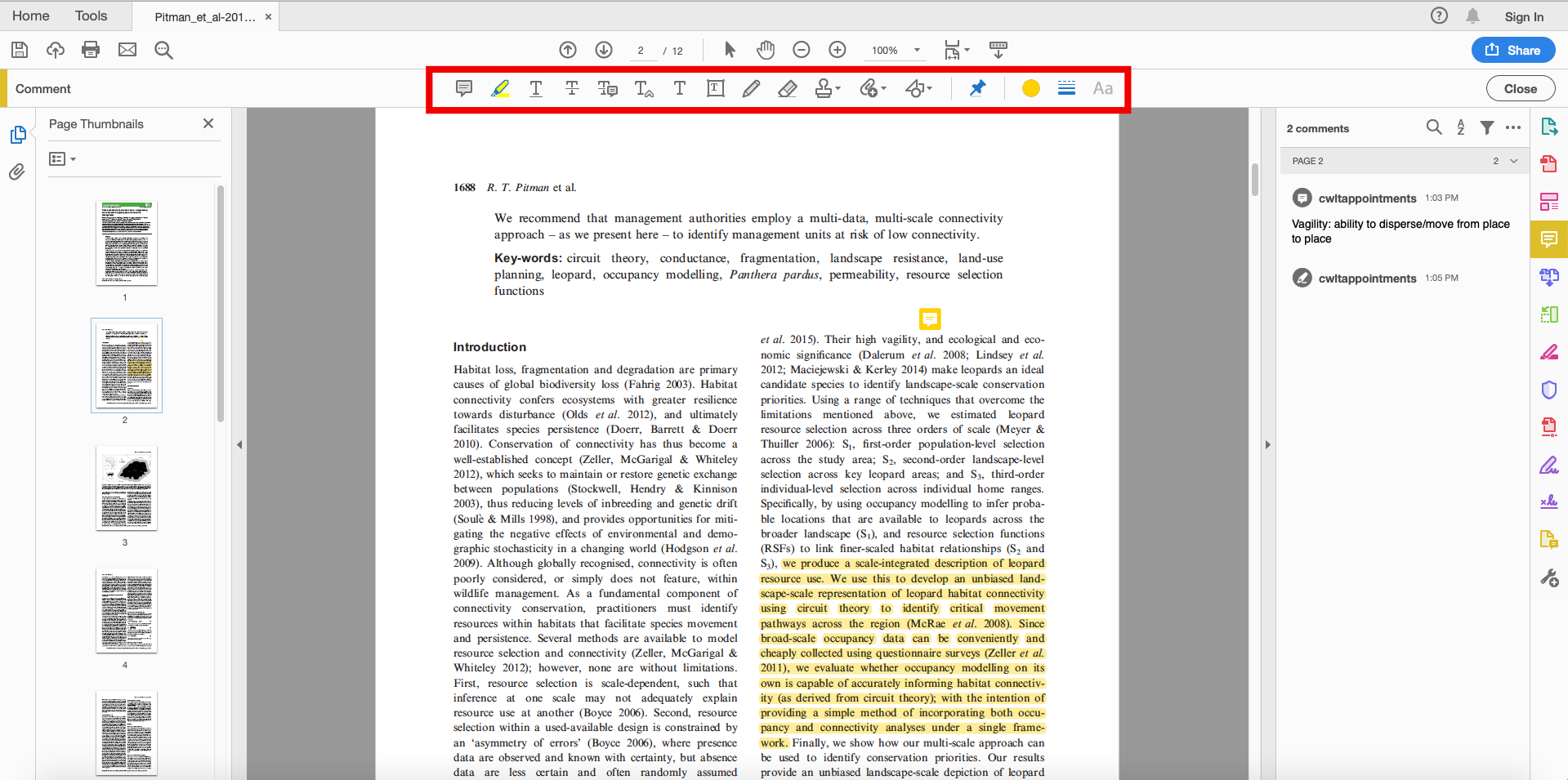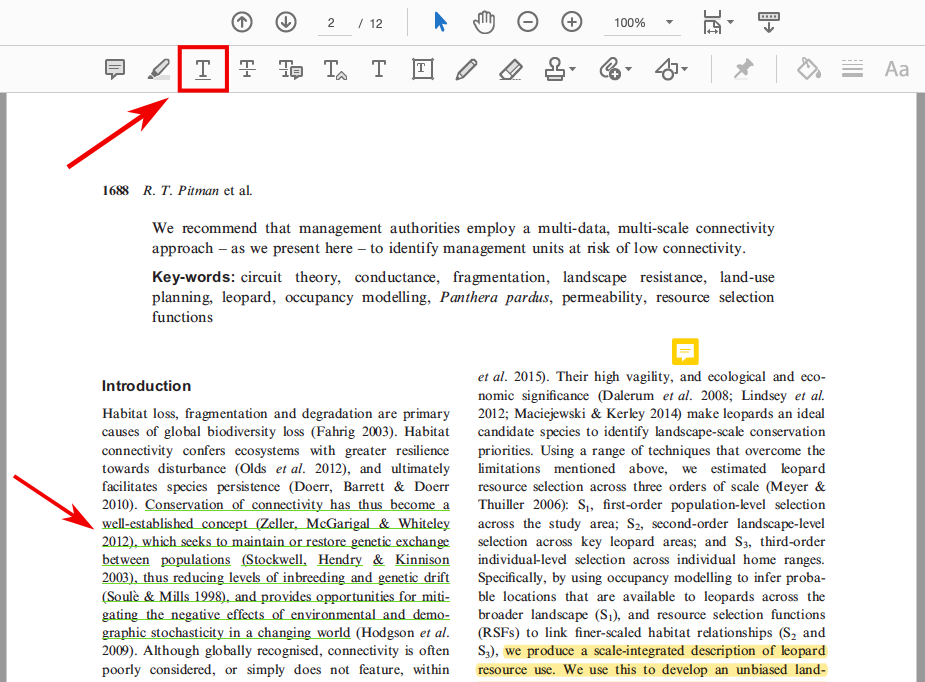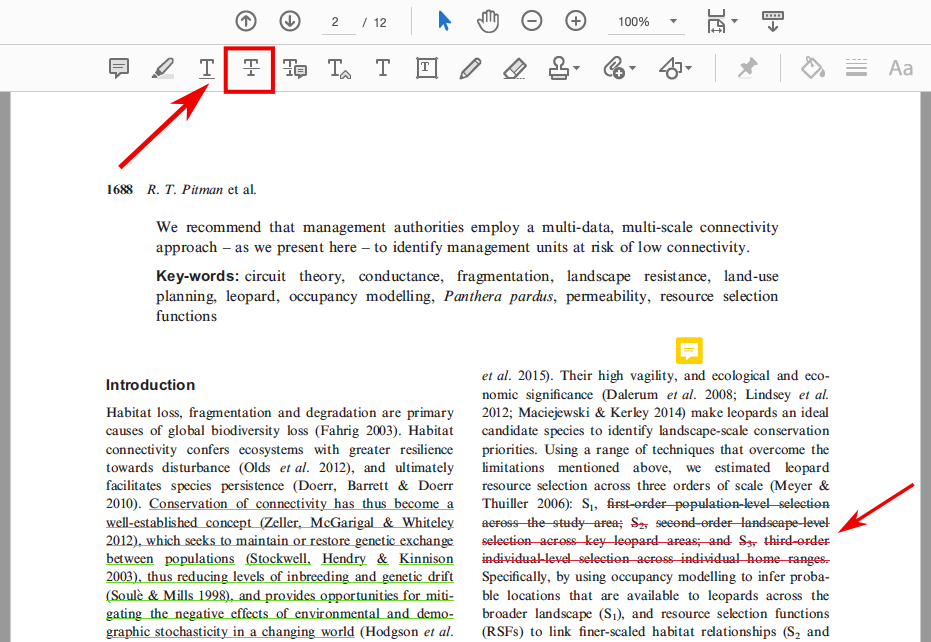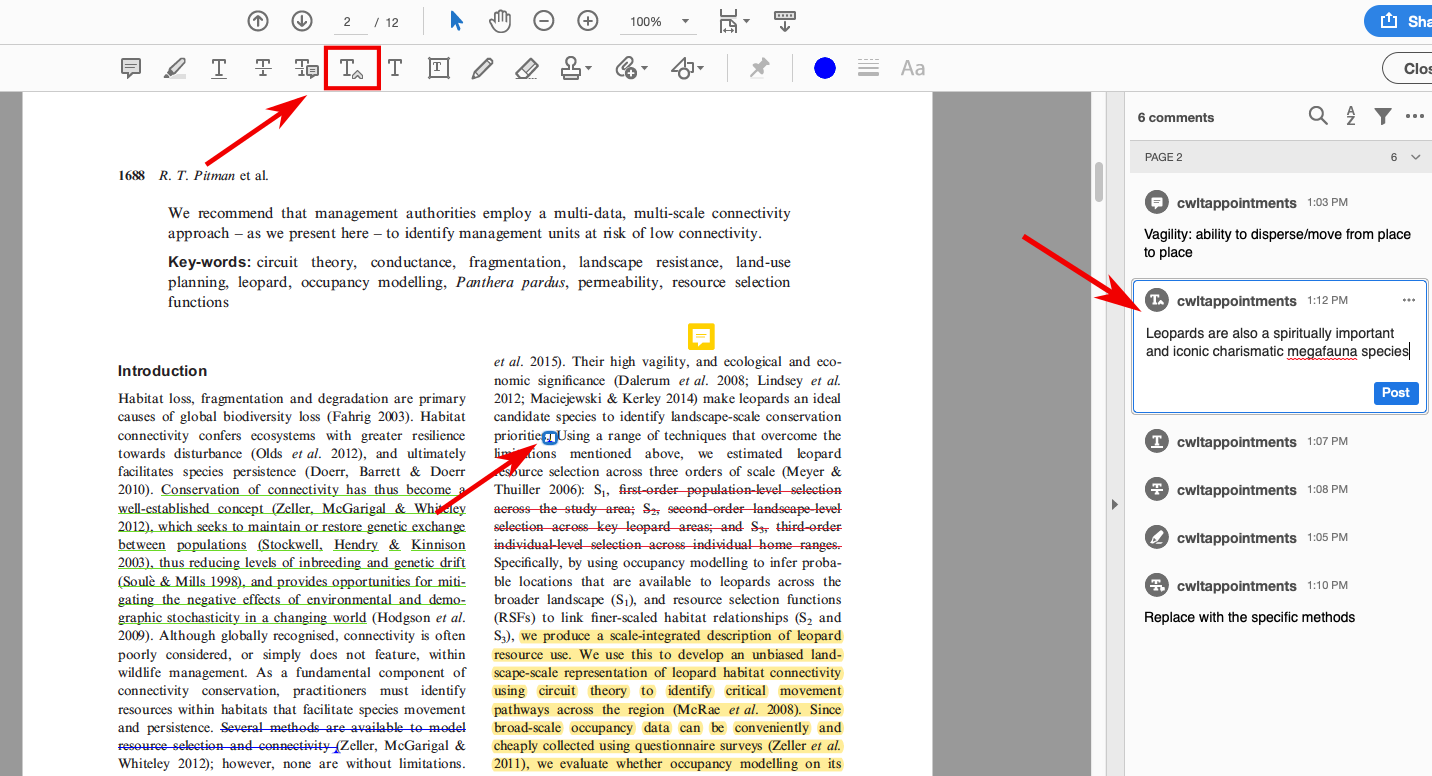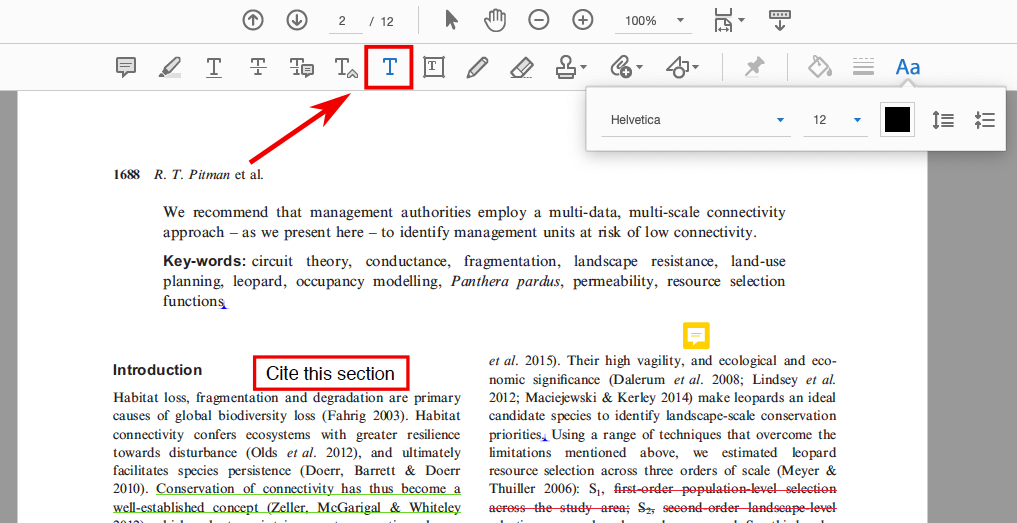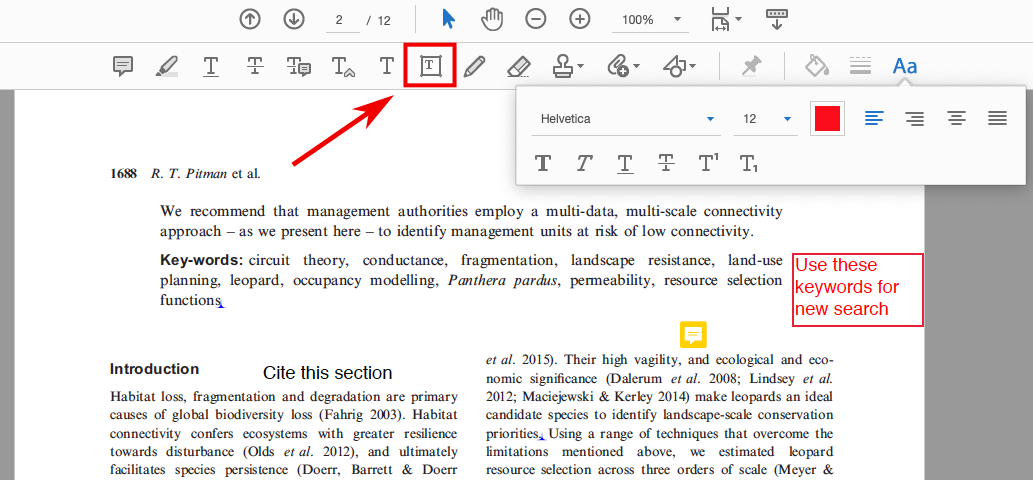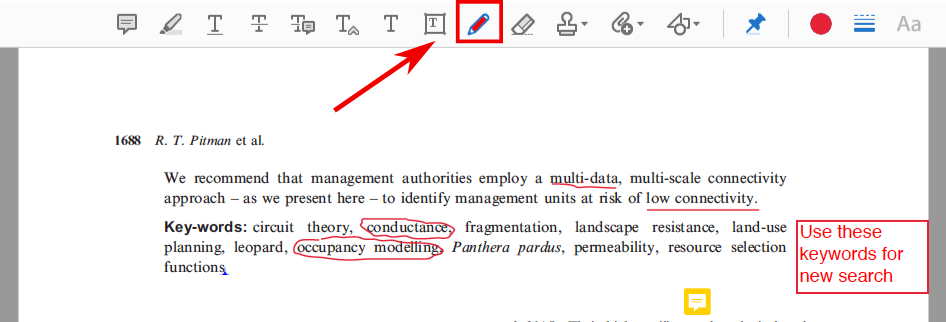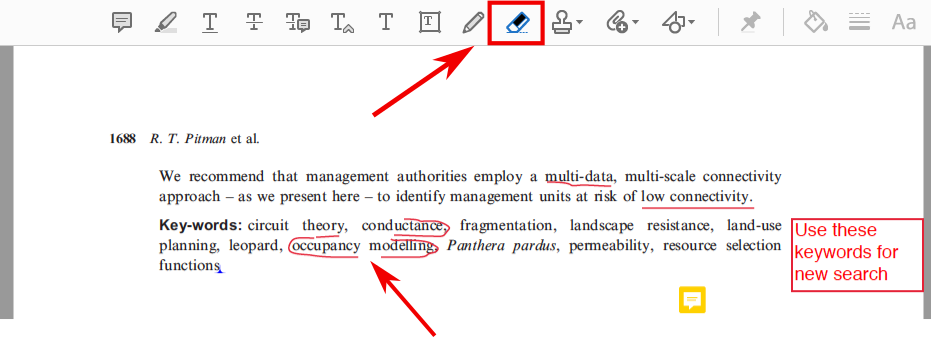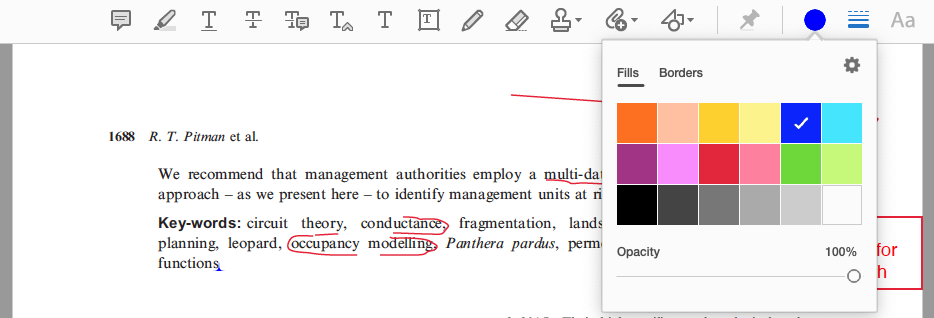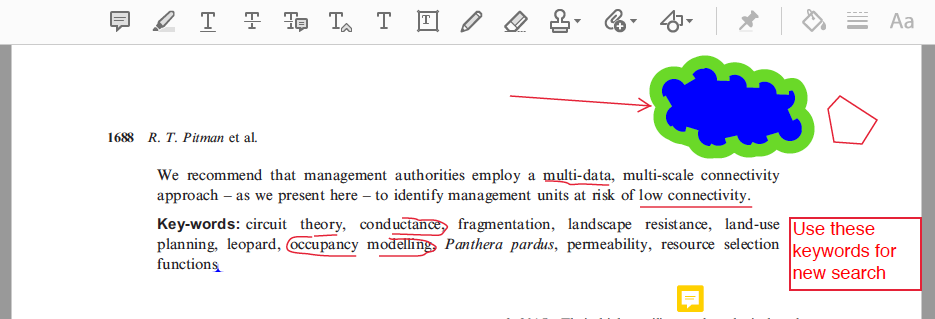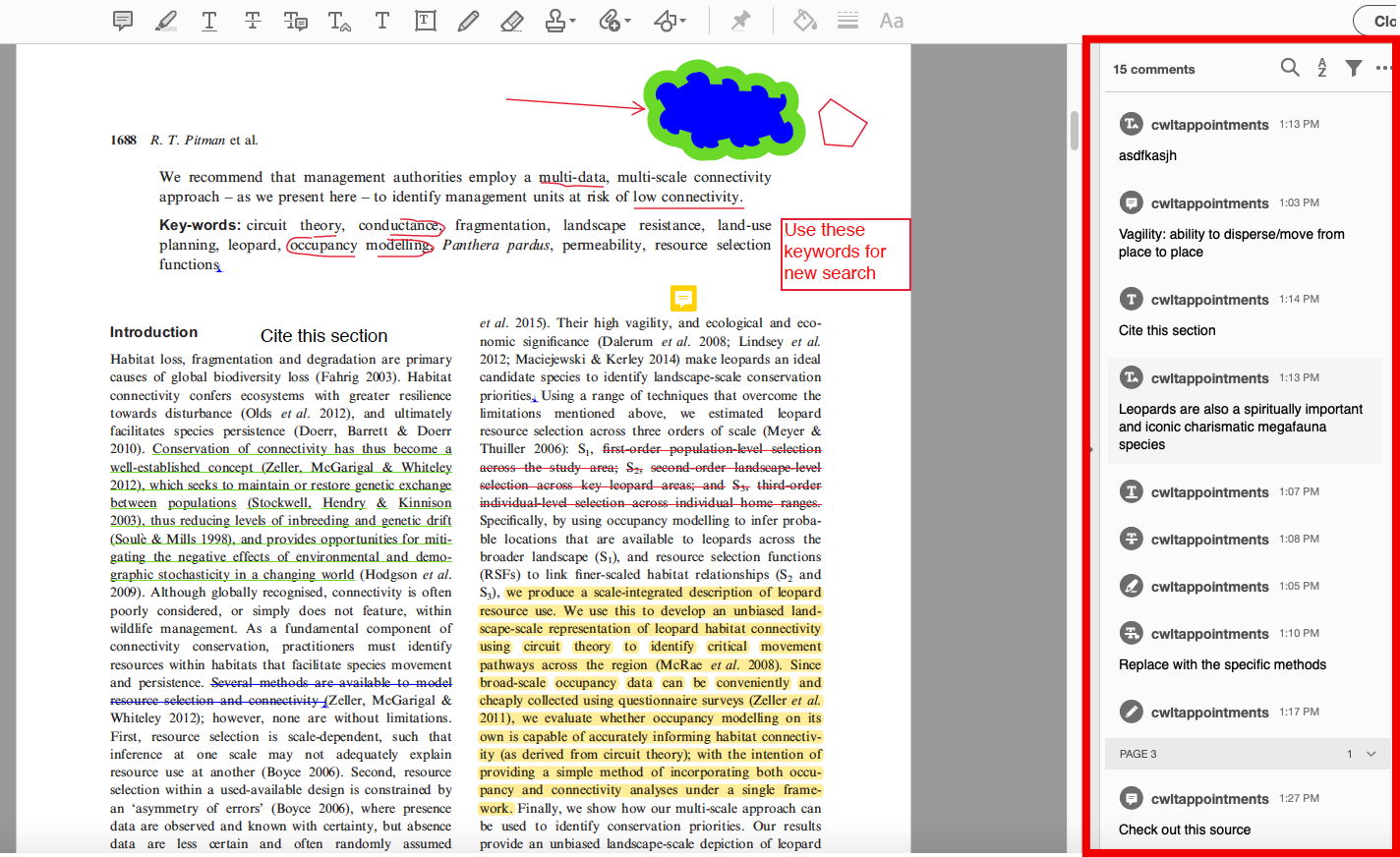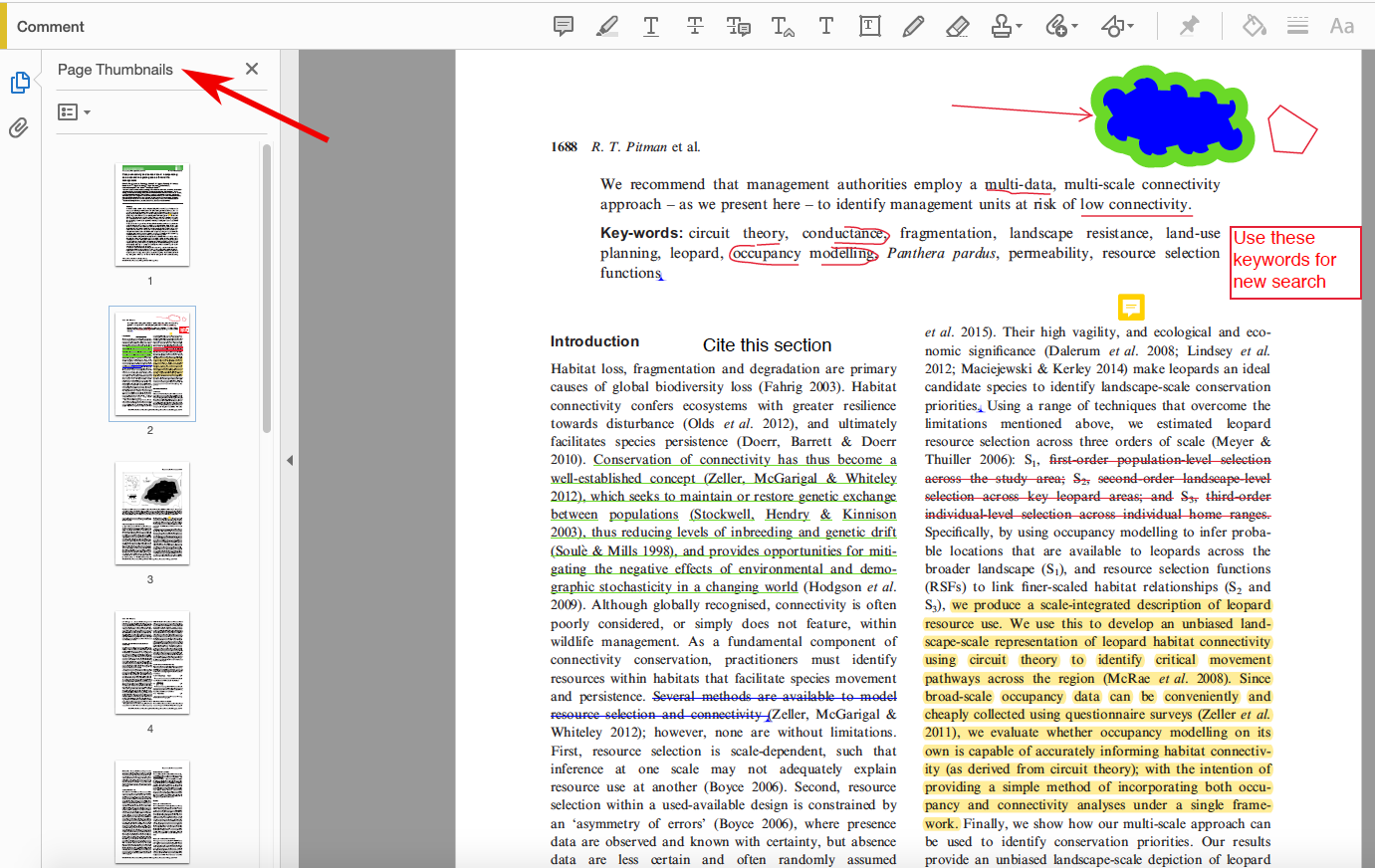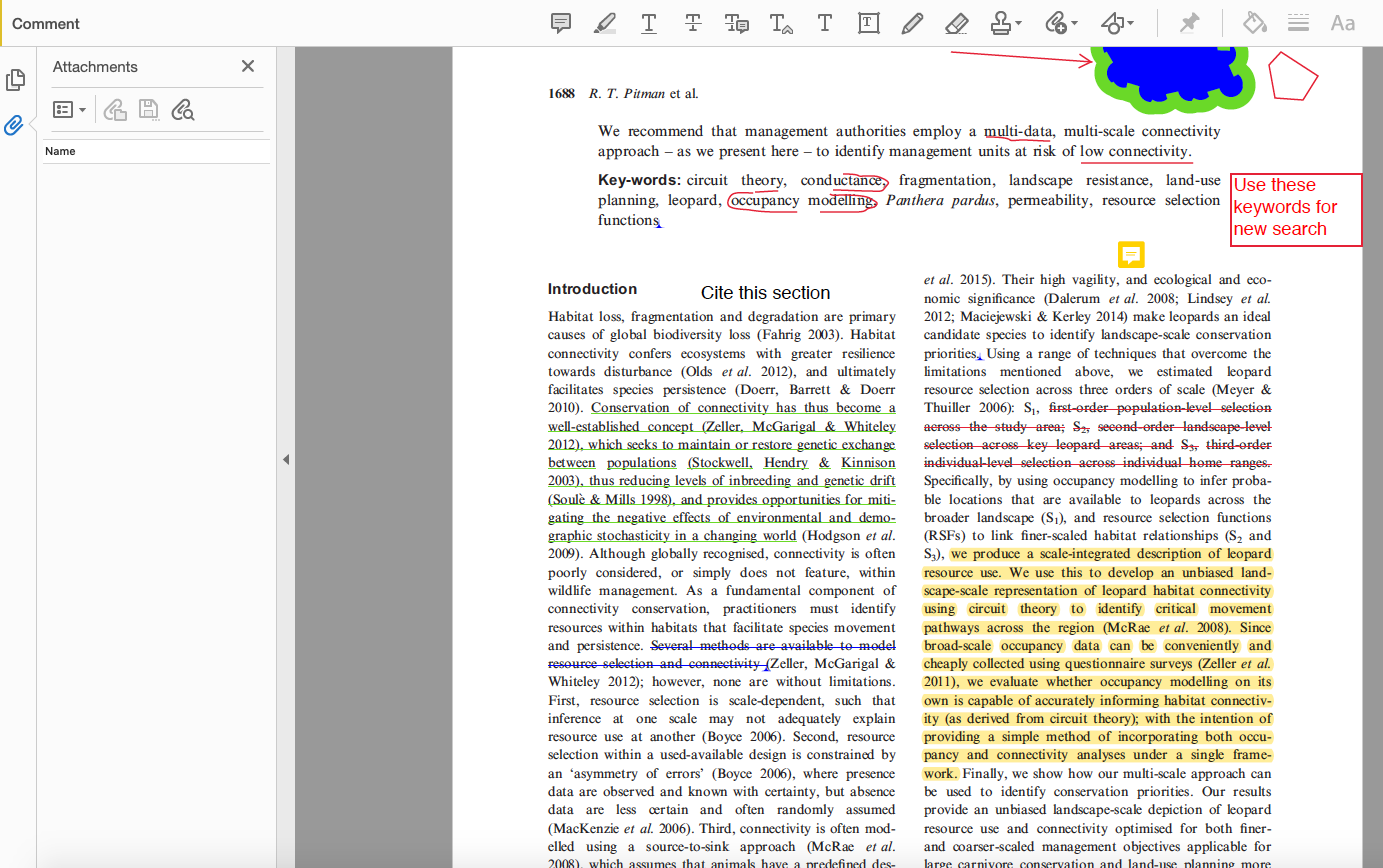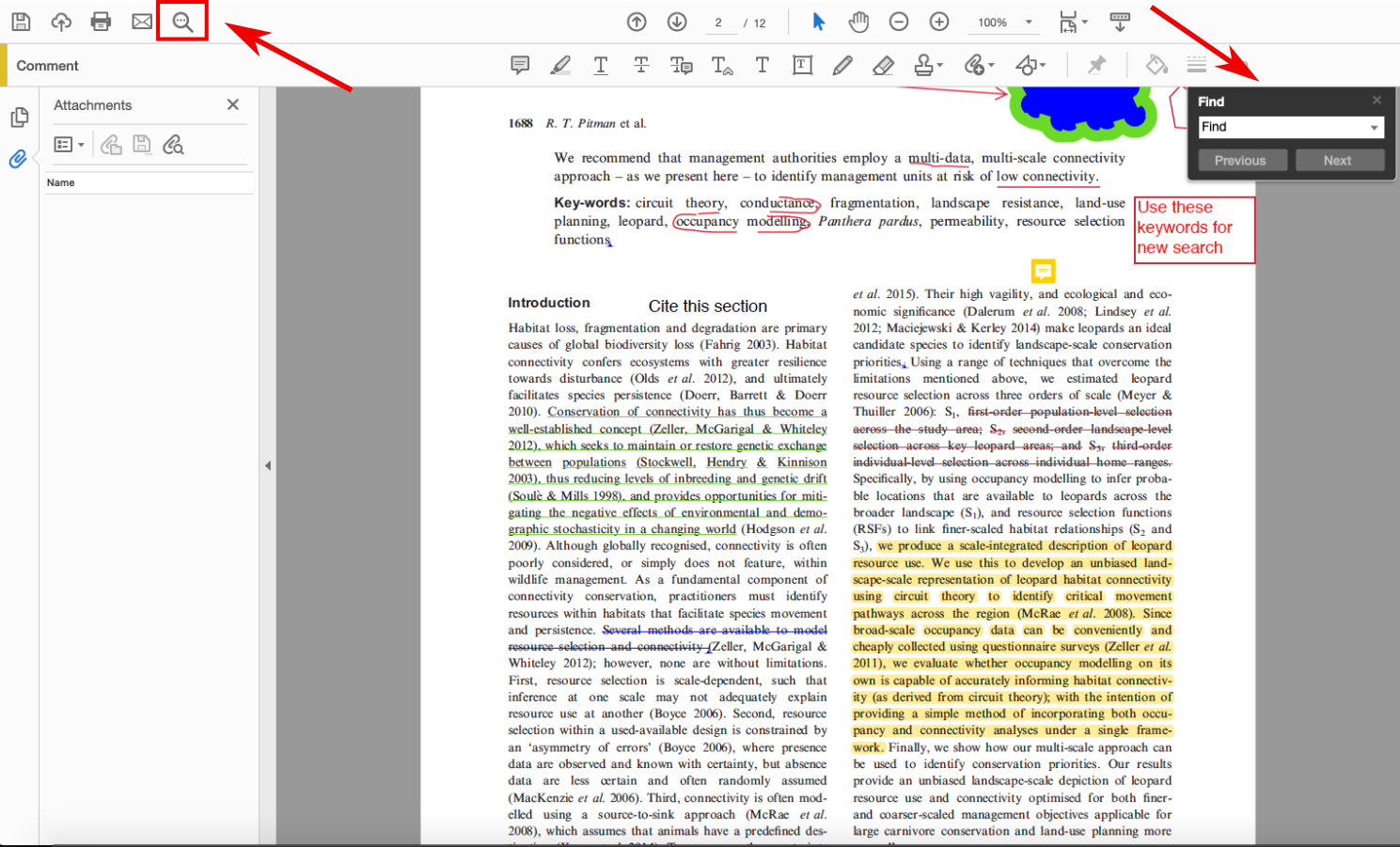- Underlining
-
To underline a section of text, select the third icon from the left (“T” with a line underneath) and highlight the section of text you want underlined. A green line will appear beneath the section of text.
- Strike-Through
-
If you’d like to strike-through a section of text (particularly useful if you’re editing one of your own pieces or if you want to identify a part of the source document with which you do not agree), select the icon fourth from the left (“T” with a strike-through) and highlight the desired section of text. A red line will strike through this section of text.
- Replacing Text
-
If you’d like to replace text (not so useful for annotating published source documents, but especially useful if you’re editing yours or another’s paper), select the fifth icon from the left (“T” with a strike-through and a speech bubble) and highlight the section of desired text. A blue line will strike through this section of the original text and a window text box will appear allowing you to write the text you want to replace it with.
- Inserting Text
-
If you’d like to insert text (again, more useful for documents you are actively editing than source documents you are annotating), select the sixth icon from the left (“T” with a subscript carrot) and place your cursor in the place in the text where you’d like to insert new text. A small blue box with a carrot will appear in the text, while a window text box will allow you to write the text you’d like to insert.
- Adding Text Directly
-
If you’d like to add text directly onto the document (useful if you want to more easily view your comments), select the seventh icon from the left (plain “T”) and highlight the area you’d like the text to go. Begin writing and your comment will appear directly onto the document.
- Adding a Text Box
-
Another way to add text directly onto a source document is to create a text box. To do this, select the eighth icon from the left (“T” within a box) and create the text box where you want it on the document. A red text box will appear in which you can write your comment.
- Drawing Free-form
-
You can also draw free-form on the document to emphasize certain sections or (if you’re good at drawing using a mouse or touchpad, which I am not) even draw pictures or write comments to annotate the document. To do this, select the ninth icon from the left (pen) and begin to write/draw in red pen anywhere on the document.
(Like I said, I’m not that artistically savvy.)
- Erasing
-
If you’d like to erase something you’ve drawn, you can also do this by selecting the tenth icon from the left (eraser) and moving it over your drawing to erase it.
- Adding Shapes
-
If you’re more artistically/visually inclined, you can also add pre-formed shapes to your document to draw emphasis to certain sections or have fun while you annotate. To do this, select the thirteenth icon from the left on the toolbar (cluster of shapes), and use the drop-down menu to select which shape you’d like to draw.
You can also change the color, opacity, and line thickness of your drawing tools by selecting paint bucket and line-thickness icons at the far right of the toolbar.
Go wild! (But not too wild.)
- Keeping Track of Your Comments
-
Adobe is also really great because it keeps track of each of your comments as you add them and provides a running list of them along the right side of the screen. If you want to jump to a certain comment, simply click on the desired comment in the list and the document will take you to that comment. You can also arrange these comments by page, author, date, type, checkmark status, and color or filter them by reviewer, type, status, and color.
- Changing the Page Viewer
-
There are also useful page-viewing capabilities to the left side of the screen under the “Page Thumbnails,” “Bookmarks,” and “Attachments” icons. “Page Thumbnails” will allow you to see which page of the document you are currently viewing:
Or you can switch to “Bookmarks” to view an outline of the source document and click to go to a certain section:
If there are attachments that were included in the source document, selecting the “Attachments” option will allow you to view them.
- Searching the Document Source
-
Finally, you can search for key words and phrases in the document by selecting the “Find text” icon (magnifying glass) in the upper left of the original toolbar. A window will appear in which you can type in the word or phrase you’d like to find; selecting “previous” or “next” will bring you to each instance in the document where that term was used.
